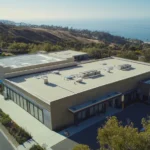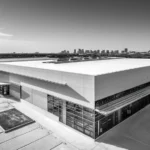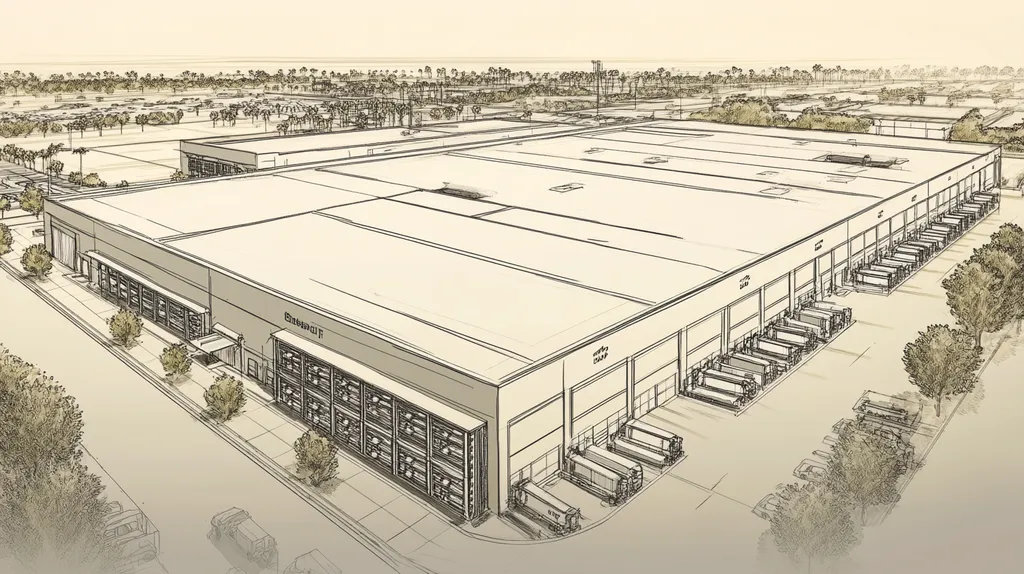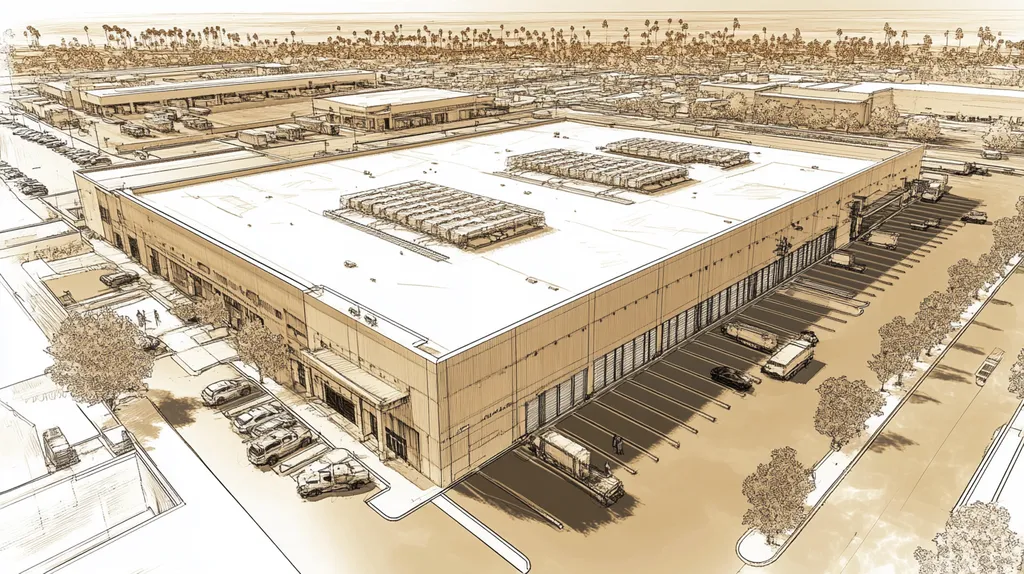In commercial roofing, fog presents a critical safety challenge that can reduce visibility to less than 100 meters, leading to a 20% increase in workplace accidents and significant project delays. Recent industry studies show that nearly one-third of roofing projects face weather-related setbacks, with fog being a leading contributor.
For property owners and facility managers, understanding fog’s impact on visibility is essential for protecting both workers and investments. Clear visibility directly affects installation quality, worker safety, and project timelines.
This comprehensive guide examines how fog influences commercial roofing operations, from basic safety protocols to advanced mitigation strategies, helping stakeholders make informed decisions about their roofing projects.
SECTION 1: THE BASICS EXPLAINED
Fog isn’t just a simple weather condition; it can dramatically reduce visibility on commercial roofing projects, presenting serious safety risks and operational delays. When fog rolls in, visibility can drop to less than 100 meters, making it harder for workers to see hazards and carry out their tasks effectively. As construction timelines become tighter, understanding the implications of fog becomes essential for maintaining safety and efficiency on the job site.
What It Is (In Plain Language)
Fog forms when tiny water droplets cluster together in the air, creating a cloud right at ground level. This happens when moisture in the atmosphere condenses in cooler temperatures. Depending on the conditions, fog can range from a light haze to dense layers that completely obscure vision. Even light fog can pose challenges during roofing work.
For roofing teams, clear sightlines are crucial for navigating rooftop spaces, handling tools, and conducting safety checks. When visibility drops, it can lead to accidents, miscommunication, and project delays.
Fog is most frequent during early mornings or late evenings, especially in coastal or humidity-rich areas. Keeping an eye on weather forecasts allows roofers to prepare for foggy conditions and adjust their schedules as needed.
By comprehending fog’s behavior, roofing teams can prioritize both safety and productivity, ensuring projects remain on track and within budget.
Why It Matters (To Your Building)
Foggy conditions can seriously compromise the success of roofing projects. Limited visibility not only slows down work but also increases the likelihood of errors during installation. Mistakes can lead to leaks or structural damage, threatening the integrity and functionality of the building.
In addition to potential quality issues, delays caused by fog can escalate costs. Extended project timelines result in higher labor expenses and may require additional materials or equipment, placing a strain on budgets.
For property owners, being aware of fog’s impact can enhance communication with contractors. This knowledge enables informed decisions about scheduling and helps safeguard their investment in the property.
Recognizing the importance of fog conditions ultimately contributes to safer, more efficient roofing jobs. Without this awareness, property owners risk encountering unexpected challenges that could have been mitigated.
How It Works
Fog forms under specific environmental conditions, notably high humidity combined with cooler temperatures. These elements significantly impact visibility, complicating outdoor activities like roofing. When the moisture in the air condenses, it creates a thick veil that obscures vision, making it harder to see potential hazards on the roof.
Understanding the mechanics of fog is vital for effective project planning. Roofing teams can take proactive measures by shifting work hours or concentrating on indoor tasks until conditions improve.
Utilizing technology to monitor weather can enhance safety further. Weather apps and radars can offer real-time updates on fog developments, allowing roofing teams to be prepared and avoid unnecessary risks.
A strong grasp of how fog affects visibility empowers roofing professionals to establish practical safety protocols. Prioritizing safety during foggy conditions ensures that work continues while minimizing risks to the crew and the quality of the job.
SECTION 2: PRACTICAL APPLICATIONS
Fog isn’t just an inconvenience on commercial roofing projects; it creates significant obstacles affecting both safety and productivity. With visibility often dropping to less than a quarter of a mile, workers face a heightened risk of accidents and errors. Research indicates that incidents on work sites can increase by 20% under such low visibility conditions. By grasping the practical implications of fog, property owners and facility managers can make informed decisions, minimizing delays and enhancing safety on the job.
Common Uses & Examples
The challenges posed by fog complicate several aspects of roofing operations. For example, during processes like membrane application, precise alignment is crucial. When fog obscures workers’ sightlines, misplacements can occur, leading to costly errors. Additionally, safety equipment visibility—like harnesses and warning signs—diminishes, increasing the chances of accidents.
Fog also hampers the thorough inspection of roofing systems. Identifying potential issues, such as leaks or material damage, requires clear visibility. When conditions are foggy, these problems might go unnoticed, resulting in significant long-term consequences and costly repairs.
Innovative solutions, like using drones with high-resolution cameras, can help offset these challenges. Drones provide an aerial view that enhances visibility, allowing for more accurate inspections while keeping ground-level safety intact. This type of technology not only improves inspection quality but also aids in monitoring work progress from a secure distance.
Ultimately, recognizing fog’s impact and implementing advanced tools is essential for effectively managing roofing projects under adverse weather conditions.
When You Need It Most
Commercial roofing projects usually stretch over several months, exposing them to a variety of weather conditions, including fog. Understanding when fog is most likely to occur is crucial for efficient scheduling. Regions close to large water bodies or in valleys often experience fog, especially during early mornings and late evenings.
Planning to avoid critical tasks like installations or inspections on foggy days can significantly boost worker safety. Adopting flexible timelines allows teams to adapt quickly to weather forecasts, reducing potential downtime and keeping projects on track.
Furthermore, reliable weather monitoring tools are invaluable. Utilizing meteorological applications enables project managers to make informed decisions about when to proceed or delay operations based on predicted fog conditions. This proactive approach helps mitigate risks associated with low visibility.
In summary, learning to recognize fog patterns fosters safer, more efficient roofing projects, which ultimately benefits the business as a whole.
Interactions With Other Systems
Fog’s challenges extend beyond mere visibility, impacting interactions with various roofing systems and safety protocols. For instance, access equipment such as ladders and scaffolding can become perilous in low visibility. Workers may misjudge distances, increasing the risk of falls and other accidents.
Fog can also affect material performance. Moisture-sensitive roofing membranes, for example, are at risk when surfaces become wet from fog, which can lead to issues with adhesion and material integrity. This could prompt the need for reapplication, resulting in additional costs and project delays.
Implementing integrated safety systems is essential to mitigate risks associated with fog. Workers should wear reflective gear or high-visibility clothing to ensure they remain visible to each other at all times, enhancing on-site communication and safety. Establishing clear communication protocols is also vital, ensuring that team members remain aware of their surroundings, even in compromised visibility.
Ultimately, addressing fog’s interactions with roofing operations requires a comprehensive strategy that prioritizes both safety and the integrity of materials, paving the way for successful project completion.
SECTION 3: KEY TERMINOLOGY DECODED
Understanding the terminology surrounding fog and visibility is essential for navigating commercial roofing projects safely and efficiently. Fog can create serious roadblocks, affecting everything from worker productivity to the quality of the roof installed. By clarifying key terms, property owners and facility managers can better assess risks and make informed choices. This section breaks down important terms, industry jargon, and common measurements related to visibility in foggy conditions.
Essential Terms Explained
Fog is defined as a weather condition made up of tiny water droplets suspended in the air, which reduces visibility to less than one kilometer. Recognizing different types of fog—like ‘light fog’ or ‘dense fog’—helps stakeholders understand how it could affect roofing tasks. For example, dense fog can reduce visibility to as low as 50 meters, posing serious hazards for workers.
Another critical term is “visibility range,” which refers to the distance one can see clearly, typically measured in meters. A visibility range under 100 meters is generally deemed unsafe for roofing work. Being aware of these measurements is key for deciding if conditions are suitable for a task.
Lastly, “safety protocols” consist of essential practices that protect workers during adverse weather. These may include temporary closures and limiting access to rooftops when fog is dense, ensuring that on-site personnel remain safe and secure.
Industry Jargon Translated
Industry jargon can sometimes create confusion, especially for those not directly engaged in roofing. Terms like “low-visibility operations” refer to tasks performed when clarity is compromised, such as roof inspections or material deliveries during fog. Understanding these terms empowers facilities managers to handle their projects more effectively.
Another term to be aware of is “spotters.” These individuals are designated to monitor surroundings and ensure safety during low-visibility scenarios. Having spotters on-site during foggy weather can minimize accidents and keep projects running smoothly, making them a vital part of project management.
Measurement & Units Simplified
Visibility measurements in fog are typically expressed in meters or feet. For instance, if visibility is reported as 200 meters, workers must know that operations will need to adjust accordingly. Understanding these units is crucial for accurately assessing safety risks.
Wind speed is also an important consideration, measured in miles per hour or kilometers per hour. High winds can worsen fog conditions, further complicating safety. Thus, property managers should always take both visibility and wind metrics into account when planning roofing tasks.
Temperature additionally affects fog formation and safety. Evaluating temperature in degrees Celsius or Fahrenheit is important for understanding fog density. Keeping a close eye on temperature fluctuations can be vital for making informed decisions about roofing project schedules and procedures.
SECTION 4: DECISION FACTORS
The impact of fog on visibility during commercial roofing projects is a pressing issue that can’t be ignored. As studies indicate, visibility can plummet, leading to a 25% increase in accidents. This risk translates to costly mistakes and project delays, making it vital for property owners and facility managers to recognize how fog influences project timelines and budgets. Evaluating cost considerations, performance trade-offs, and lifespan factors becomes essential for making smart decisions when faced with foggy weather conditions.
Cost Considerations
Fog can quickly escalate costs on roofing projects. When visibility decreases, work typically slows or halts altogether, dragging out project timelines and increasing labor expenses. For instance, a roofing project scheduled to take four days could extend to over a week, adding extra fees for equipment rentals and potential penalties from delayed contract obligations.
Moreover, if fog results in safety incidents, the financial fallout can intensify. Claims made due to unsafe working conditions can drive up insurance premiums, impacting future projects. Understanding these financial dynamics allows decision-makers to consider fog’s influence in their project budgets more effectively.
Additionally, hiring specialized equipment and personnel trained to operate under low-visibility conditions can further strain budgets. Weighing these costs against safety needs is crucial for maintaining financial soundness while protecting workers.
In sum, recognizing and planning for these cost implications leads to better project management and strategic decision-making, ultimately ensuring projects are financially viable despite fog-related challenges.
Performance Trade-offs
The performance of roofing materials often suffers in foggy conditions. For example, excess moisture can disrupt the adhesion process, leading to issues with long-term durability. If roofers are unable to correctly apply materials due to diminished visibility, it can result in leaks and damage down the line.
Additionally, fog significantly restricts the ability to assess quality during installation. Problems that require clear visibility, like unnoticed flaws, can jeopardize the integrity of the project. By proactively addressing these issues, property owners can weigh the risks versus the benefits of working in foggy weather.
Effective communication plays a vital role in performance during such conditions. When visibility is low, traditional verbal instructions might be missed or misunderstood, increasing the chance of errors. Utilizing alternative communication tools like two-way radios or visual signals can help enhance coordination and safety when working under adverse conditions.
Without a solid plan to navigate the challenges posed by fog, property owners can face significant setbacks regarding both performance and safety, underscoring the need for thorough preemptive evaluations in roofing project planning.
Lifespan & Durability Factors
The longevity of a roofing system can be compromised when fog hampers the quality of installation. If moisture seeps in during the installation process, it may lead to the premature failure of roofing materials. For example, asphalt shingles can warp or detach if they’re installed in wet conditions and fail to adhere properly due to low visibility.
Moreover, materials that aren’t correctly sealed in foggy weather can incur higher maintenance costs over time. Property owners often face large repair bills due to leaks or failures that could have been avoided with appropriate installation practices. Adopting a cautious approach in foggy conditions is essential for achieving a durable roofing solution.
It’s also important to consider how weather impacts warranty claims. Many manufacturers stipulate that proper installation is crucial for maintaining valid warranties. Issues arising from suboptimal installation in foggy conditions could result in denied claims, putting additional financial pressure on building owners.
In conclusion, evaluating fog’s influence on longevity and durability not only enhances a roofing project’s resilience but shields property owners from costly repairs and warranty complications down the road.
SECTION 5: COMMON CHALLENGES
Fog might appear to be a minor hurdle on commercial roofing projects, but its effects can be profound. The National Weather Service reports that fog can reduce visibility to less than a quarter mile, which significantly impacts worker safety and project efficiency. This reduction in clarity heightens the risks of accidents and mistakes, leading to costly delays. For property owners and facility managers, understanding these challenges is essential for keeping roofing operations on track.
Frequent Problems & Solutions
Fog can create a veil of uncertainty that obstructs visibility, putting roofing crews at risk. In severe conditions, workers may become disoriented, increasing the chances of slips, falls, or improper installations. To tackle this issue, companies can invest in advanced weather monitoring systems, allowing them to predict foggy conditions before they arrive. Additionally, bright work lights can be deployed to boost visibility on-site, even when natural light is lacking.
Another major challenge arises from miscommunication among crew members due to reduced visibility, which often leads to errors that require rework. Regular toolbox talks emphasizing communication strategies specifically for foggy conditions can be beneficial. Implementing clear visual signals and equipping workers with walkie-talkies can help ensure everyone stays connected, no matter how thick the fog gets.
Furthermore, the roof surface can become slippery due to moisture from fog. To enhance safety, it’s vital to have a regular inspection schedule in place. Introducing anti-slip measures, like traction mats or slip-resistant footwear, can significantly reduce the risk of accidents on the job site.
Warning Signs To Watch For
It’s essential to stay alert to warning signs that indicate fog may disrupt roofing activities. A sudden drop in temperature combined with rising humidity often signals the approach of fog. Facility managers should monitor weather forecasts closely to prepare their teams for these conditions.
Changes in worker behavior can also hint at fog-related challenges. If crew members start appearing hesitant or their communication drops off, this could be a result of visibility issues. Encouraging open dialogue allows workers to voice concerns, enabling quick action before any accidents occur.
Another indicator is the increased use of headlamps or extra lighting by crew members. If workers begin to rely heavily on these tools, it’s a clear signal that visibility is an issue. Keeping track of how often these lights are used can help managers decide when it might be necessary to adjust project plans.
Preventative Approaches
Taking proactive measures is key to minimizing fog-related disruptions in roofing projects. A thorough risk assessment should be conducted to identify vulnerabilities in operations. Creating a comprehensive safety plan that specifically addresses potential fog scenarios can help mitigate problems. This plan should encompass safety equipment guidelines and clear communication strategies for low-visibility situations.
Facility managers can also invest in training sessions that equip roofing crews with strategies for handling foggy work conditions. Teaching teams about safe practices, such as proper ladder technique and navigating slippery surfaces, can greatly reduce the risk of accidents.
Flexibility in scheduling can also prove to be a vital strategy. When weather forecasts indicate fog, adjusting work schedules to avoid critical tasks can help keep projects on track and ensure that safety is maintained. Shifting to groundwork or non-visual tasks during foggy days allows teams to continue progressing while focusing on safety first.
SECTION 6: NEXT STEPS & RESOURCES
Fog can create significant visibility challenges for commercial roofing projects, leading to safety hazards and delays. Recent studies indicate that nearly 40% of weather-related construction accidents happen in low-visibility conditions, such as fog. For property owners and facility managers, asking the right questions and utilizing available resources is essential for navigating these obstacles and ensuring safe, efficient roofing practices. This section outlines practical steps to manage fog-related issues effectively.
Questions To Ask Providers
It’s essential to understand how a roofing contractor manages challenges related to fog. Property owners should ask about their visibility protocols in adverse weather. Inquiries might include, “What specific safety measures do you implement during foggy conditions?” or “How do you stay updated on weather changes while on the job?”
Additionally, it’s beneficial to discuss their experience dealing with fog and their strategies for minimizing risks. For example, do they have a solid plan for postponing work or using specialized safety gear when fog occurs? These details will help gauge their preparedness for addressing fog conditions.
Don’t forget to request references from past clients who can speak to the contractor’s work under similar weather conditions. Insights from others can reveal valuable information regarding the contractor’s commitment to safety and effectiveness.
Lastly, ensure that the provider is transparent about their training programs, especially related to navigating low visibility. Understanding their approach to safety training reassures property owners of their crew’s competencies in managing fog-related risks.
Industry Standards & Guidelines
Getting acquainted with industry standards for working in adverse weather is vital for maintaining safety on roofing projects. Organizations like the Occupational Safety and Health Administration (OSHA) set forth guidelines that outline minimum visibility requirements for safe work operations in conditions like fog.
Moreover, the National Roofing Contractors Association (NRCA) offers insights into best practices for managing sites under reduced visibility conditions. Consulting these resources helps property owners and facility managers grasp their responsibilities as well as the protocols contractors should follow.
Familiarity with local regulations on roofing work during inclement weather protects property owners from liability. Reviewing applicable standards before commencing roofing tasks ensures that teams adhere to all safety protocols.
Lastly, referring to American National Standards Institute (ANSI) safety standards during construction can further bolster safety efforts. By implementing these recommendations, property owners contribute to minimizing fog’s negative impact while promoting a culture of safety among roofing crews.
Further Learning Simplified
Ongoing education remains critical to effectively address fog-related challenges in commercial roofing. Numerous online resources and industry seminars are available, offering key information on managing weather-related risks, including those associated with fog.
Subscribing to trade publications keeps property owners updated on emerging trends and innovations in roofing safety. Literature focusing on construction safety and weather impacts can be particularly beneficial for staying informed.
Participating in peer networks also provides a valuable forum for sharing insights and solutions regarding fog challenges. Online communities and trade shows foster collaboration among property owners and roofing professionals, enhancing knowledge on best practices.
Additionally, consider reaching out to local universities or technical colleges that offer courses in construction and safety management. This opportunity enhances the knowledge base for property managers, enabling them to make informed decisions and advocate for improved processes in their roofing projects.
The Bottom Line
With fog-related accidents accounting for 20% of roofing injuries and causing millions in project delays annually, visibility management cannot be ignored in commercial roofing operations.
Modern technology and proper protocols can help mitigate these risks, but only when implemented systematically across all project phases.
The successful completion of roofing projects depends heavily on how effectively teams monitor, respond to, and plan around foggy conditions that impact visibility.
Property owners and facility managers must prioritize comprehensive fog safety protocols, including weather monitoring systems, enhanced communication tools, and flexible scheduling strategies.
By understanding and actively addressing fog’s impact on visibility, stakeholders can better protect their investments while ensuring worker safety remains paramount.
FREQUENTLY ASKED QUESTIONS
Q. How does fog affect safety on a commercial roof?
A. Fog significantly reduces visibility, creating hazards for roofing teams. When workers can’t see clearly, they may not notice potential dangers or communicate effectively, which can lead to accidents and project delays. Ensuring safety protocols are in place during foggy conditions is crucial for project success and worker protection.
Q. What are the primary challenges for an industrial roof under fog?
A. The main challenges include reduced visibility, increased accident rates, and difficulty in inspecting surface quality. Fog hampers the precision needed during critical tasks, escalating the risk of errors that could compromise the roof’s integrity. Proper planning and safety measures are key to overcoming these obstacles.
Q. How can fog impact the efficiency of a commercial roofing project?
A. Fog can slow down operations as workers may need to halt tasks until visibility improves. Delays occur when teams must wait for conditions to change, leading to higher labor costs and extended project timelines. Being proactive about scheduling can help mitigate these inefficiencies.
Q. What tools can help manage visibility on a commercial roof during fog?
A. Advanced weather monitoring systems and bright work lights can enhance visibility during fog. Using drones with high-resolution cameras for aerial inspections also helps overcome visibility issues on-site. These tools ensure that projects can proceed safely and effectively, even in challenging weather.
Q. What are fog delays in commercial roofing projects?
A. Fog delays refer to lost time when roofing operations must pause due to reduced visibility. These delays can significantly affect project timelines and budgets, as workers may face extended wait times and increased costs. Awareness of fog conditions helps in planning to minimize these interruptions.
Q. How can communication be improved during foggy conditions on a roof?
A. Implementing clear visual signals and using two-way radios can enhance communication. Crew members should be trained to use these tools effectively, ensuring everyone stays connected even in low visibility. Regular toolbox talks can also reinforce communication strategies for foggy conditions.
Q. What steps should be taken to prepare for fog while on a commercial roof?
A. Preparing for fog involves monitoring weather forecasts closely and adjusting schedules accordingly. Establishing clear safety protocols and providing training for workers on fog management enhances readiness. Regular equipment checks, such as ensuring bright lights are available, can further prepare the team for foggy conditions.










